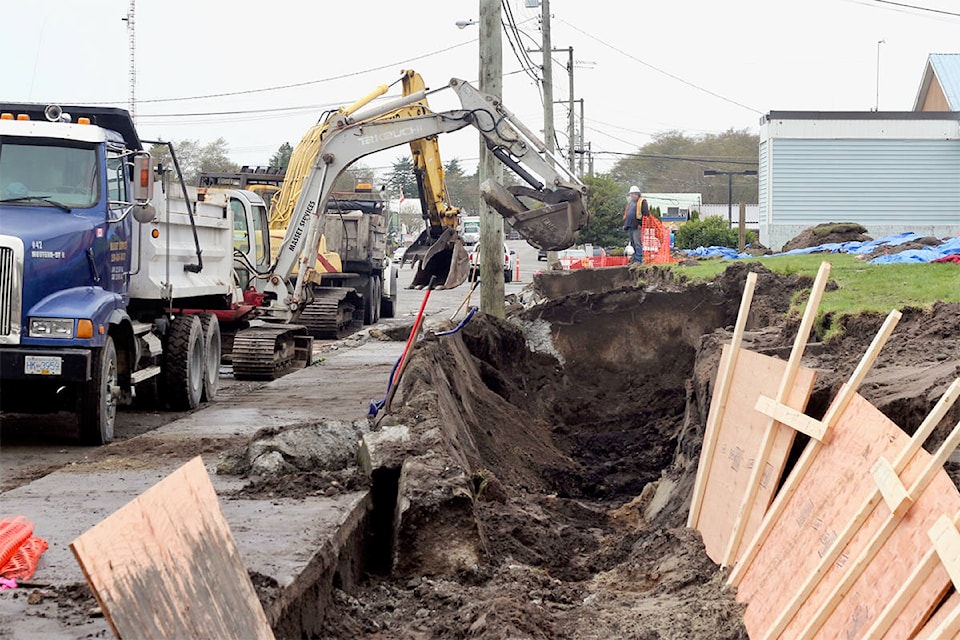Gudangaay Tlaats’gaa Naay Secondary is getting a brand-new look.
But before a new exterior, seismic upgrades and a retaining wall go up at the Masset high school, archaeologists are carefully tracing some of the deep Haida cultural history stored right in the school grounds.
Lao Peerless, maintenance supervisor for the Haida Gwaii School District, is excited for how the school will look when the whole $1.8-million upgrade wraps up this spring.
“It’ll pop — you’ll drive by and go wow, you can notice the school,” said Peerless, showing a design for the new exterior.
With contrasting patterns of red, grey, black and white, it will be a big change from the aging sky-blue siding and grimy white trim on the school today.
What people won’t see are the areas of extra insulation and plywood sheathing behind it— upgrades that will cut the school’s power bills and strengthen it in case of an earthquake.
But step one in the provincially-funded project is to replace the old retaining wall fronting Collison Avenue, which was starting to shift and crack, and to add a railing on top.
“It’s a four-foot drop,” Peerless said. “You’re supposed to have a railing.”
The district recently shipped in 128,000 pounds of interlocking Allan blocks to build the wall.
But starting in August, they first they hired a team of archaeologists to identify any Haida cultural artifacts in the already disturbed earth just behind the wall, or anywhere else on the school’s east side.
Archaeologist Heather Kendall, a project supervisor with Archer CRM Partnership, said there is a large Haida shell midden extending into the school grounds. Earlier work shows it runs all the way to Delkatla Slough.
That is why Kendall, her assistants, and a monitor from the Council of the Haida Nation dug 190 test holes in a grid pattern on the school’s east side — so the district can avoid disturbing the most culturally significant areas if it ever builds there.
One of the most common artifacts they have identified so far are called “spall” tools. These stone tools are usually made of basalt, anthracite, or rhyolite — rocks that predictably break apart or spall into thin shards when heated by fire.
“They are incredibly sharp, incredibly resilient,” Kendall said. “They are excellent for cutting fish, for cutting hide, anything you need to cut.”
The team also found several small boiling stones, some ochre, some charcoal, and a pair of stone tools made of chalcedony — what most islanders would call agates.
Given how hard most of Haida Gwaii’s ocean-rolled agates are, Kendall said they may have been trade items.
Kendall, who toured the site with a class of GTN students to answer questions about the investigation and archaeology in general, specializes in using X-ray fluorescence. It’s a non-destructive, fairly new technology that she uses to identify where tool stone originally came from. The results give an idea how widely people travelled or traded in the past.
Other lab work for the team includes sifting a trio of sediment samples that should give an idea what plants and animals were on the site at various times. They will also carbon-date the charcoal deposits found in the midden, using a paired shell to correct for the effect the nearby saltwater has on carbon ratings.
“No one has carbon-dated that site yet, so I’m very excited to run our samples,” Kendall said.
